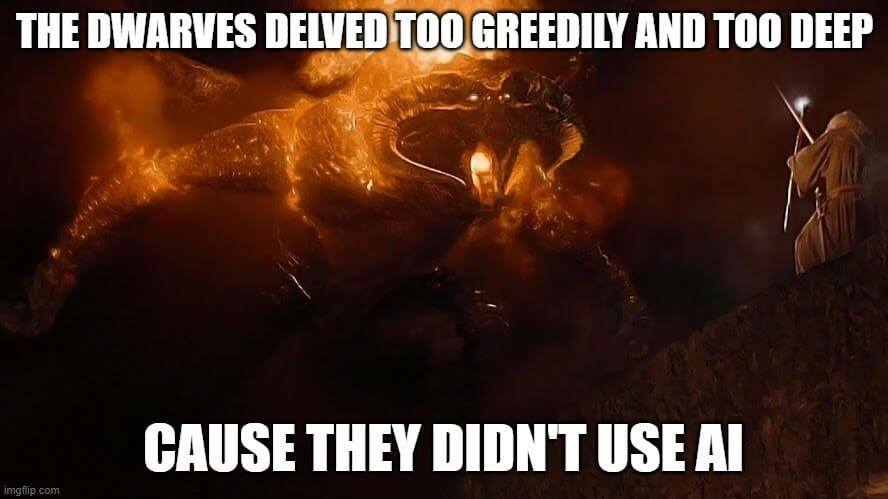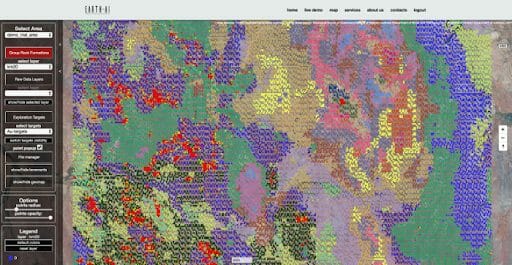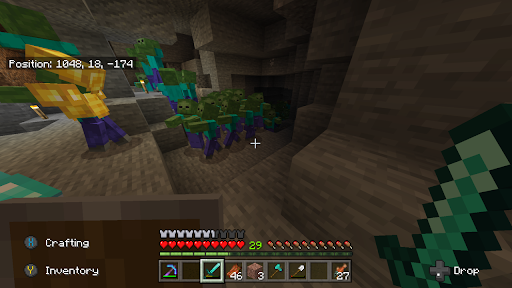AI in the Mining Industry: the Art of Digging with Algorithms

Okay, okay, having Snow White as a maid and singing “Heigh-Ho” all together in the mine can be incredibly motivating.
BUT…
What if the seven dwarves had an even more powerful tool to support their work?
Something like AI!
In today’s article, we’ll discover the ways in which artificial intelligence is already widely used in the mining industry. Among them, we can certainly mention:
- Resource discovery and planning
- Reducing mining environmental impact
- Personnel safety
- Drones and automated machines
1. Digging in the right place with AI
Before extracting resources from the earth, we must find them!
This research process requires massive investment and represents a high-risk bet, as digging into the wrong location can cost millions of dollars.
Or awaken the Balrog, as The Lord of the Rings taught us.

Artificial intelligence can help us prevent these errors (and avoid unpleasant meetings with fiery demons) thanks to a wide range of efficient tools.
Using computer vision, pattern matching, and predictive analytics, mainly powered by machine learning algorithms, AI-based systems are able to process geological data to predict the location of resources, ensuring better planning and returns.
Cool! But… how?
First, we should say a few words about the concept of machine learning.
Machine learning (ML) is a recent branch of AI, focused on creating computer algorithms that can automatically improve their performance through experience.
This experience is basically the analysis and processing of huge amounts of data.
ML algorithms can recognize specific patterns in the datasets they are “fed” with, create mathematical models concerning these relations, and use the same models to make predictions or decisions.
ML for mineral resources localization
In the mineral exploration sector, datasets come from soil samples, drill results, and chemical assays.
Thanks to Machine Learning, we can train computers with this data collected during past discoveries and analyses, and use it to spot new areas with similar patterns regarding the ground’s chemical composition and mineral distribution.
An example of this approach is EARTH AI, a high-tech company that is helping mineral explorers identify promising areas.
Collecting geophysical data from multiple remote sensors and using a machine learning algorithm, this company locates ore bodies, hard rocks, and regolith with high precision.
The localization process involves the creation of prospectivity maps, that leverage lithological, topographical, and radiometric data to display the potential likelihood of new mining locations.
I know, they may look like Pollock paintings…

Machine learning is great for mining, but not a panacea
The advances in artificial intelligence technologies, mainly driven by ML development, certainly offered new efficient tools to solve the problem of ore reserve detection.
In fact, previous approaches based on geostatistics techniques struggled to manage the typical mining datasets, sadly famous for their properties of complexity, sparseness, and impreciseness.
The application of ML algorithms, such as support vector machines (SVM), and the intensive use of neural networks helped mining engineers cope with all this variability, in order to combine different layers of data and identify key relationships among them.
The fact remains that even machine learning-based approaches require quality data to train machines in the best possible way. And that’s not always the case.
Historical data can be messy, inaccurate, or limited. We may have abundant chemical data but little information about magnetics and radiometry. This can be challenging even for the most advanced ML algorithms.
2. AI reduces mining environmental impact
Drilling around usually involves making a big mess. A big and dangerous mess.
The environmental problems regarding mining include the formation of sinkholes, erosion, a reduction of biodiversity, the contamination of soil from leakage of chemicals, and so on.
Mining by its nature is an extremely destructive process, but the introduction of AI technologies is dramatically reducing its impact on nature.
For example, the widespread deployment of sensors and cameras inside and outside the mining sites ensures to monitor excavation and extraction activities, detecting any leaks of waste and harmful materials.
Our “cybernetic eyes” can be integrated into AI and ML systems to automate video surveillance. This allows them to autonomously analyze large volumes of data and spot some anomalies or shifts from the usual patterns they are trained on, such as temperature changes and tremors.
Basically, an excellent tool for avoiding accidents or environmental disasters.
Algorithms optimize mining energy consumption
Another way AI helps protect the environment is by reducing the power consumption of the mining industry.
Ventilation represents the main energy cost in the subsoil mines. You know, miners without air cannot breathe. And people who can’t breathe, die.
Even if some Minneapolis cops seemed to think otherwise.
In this regard, AI-based automatic regulation of ventilation systems is a key factor in saving power, also by using machine learning to forecast energy peaks.
Less decisive but still useful for saving purposes is the automation of the minerals sorting. During mining operations, larger amounts of materials should be removed to find the valuable resources we’re searching for.
Some companies started to use AI-based machines to sort useless material from the cool and shiny stuff, saving fuel and energy during the process.
3. How algorithms can protect miners
Unfortunately, the mining industry is not only a potential danger to the ecosystem.
Although in recent years it has become more fashionable to think about the environment than working conditions, mining accidents involving personnel still occur quite often.
According to government estimates, about 5,000 Chinese miners die in accidents each year, while independent reports speak of over 20,000 victims.
AI is a good friend for miners
Artificial intelligence ensures better and faster decision making: an essential prerequisite for improving the health and safety conditions of miners.
It allows us to collect in real-time a wide range of data from the sensors and cameras mentioned above, detecting anomalous and potentially dangerous events.
These tools can also be paired with wearable sensors, which continuously monitor worker behavior to spot any sign of physical discomfort and send an alert.
4. Drones and automated machines for mining
As we have seen, mines are dangerous places due to accidents, contamination, fires, balrogs, and many other terrible things.
Even zombies, according to the Minecraft video game.

To cope with such a hostile environment while maximizing productivity, mining companies have long been turning towards a more AI-driven approach, developing the concept of “digital mine”.
This involves implementing self-controlled machines that can safely operate without the presence of humans and reach places where miners simply cannot physically go.
Among them, we can find autonomous excavators or transportation and loading vehicles, such as Rio Tinto’s autonomous haul trucks that can carry 350 tonnes and operate totally independently, also reducing fuel consumption by 13%.
“Rio Tinto’s autonomous haul trucks can carry 350 tonnes and operate totally independently, also reducing fuel consumption by 13%.”
What about drones?
Drones are another kind of robotic assistant that is increasingly being used in the mining industry.
Companies rely on these flying devices (and their ML-based computer vision systems) to monitor the mining operations from above, detecting unexpected issues, malfunctioning, and the overall impact on the surrounding ecosystem.
This process of autonomous image recognition is powered by ML algorithms for classification and clustering, such as Support Vector Machines (SVM) and decision trees.
AI for cleaner, safer, and more efficient mining
When techy guys read “AI” and “mining” in the same phrase, they firstly imagine the process of extracting raw data to turn it into useful information.
As we have seen, AI can also be applied to the actual mining industry. The one with shiny diamonds, powerful drills, and singing dwarves.
Nowadays, algorithms are a key factor in increasing efficiency, addressing environmental challenges, and solving safety problems, while boosting the economic value of these operations.
In the near future, the contribution of artificial intelligence will expand even further, turning the mining sector into a safer, cleaner, and more profitable industry.
Need support with your software development?

Andrea Di Stefano
Andrea is a journalist and teacher of Italian with a long-standing interest in tech and media. He loves to handle touchscreens, but to correct his students’ homework he prefers the good old red marker on paper!
